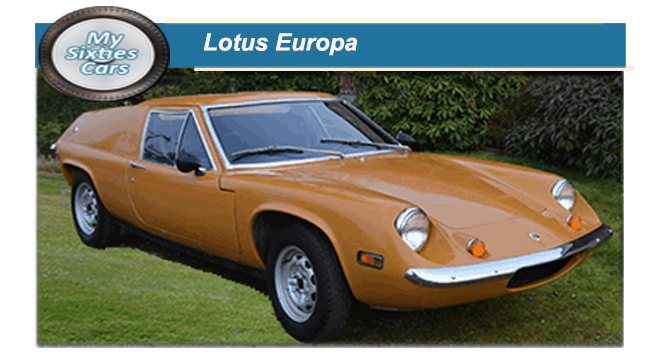
By 1966, the UK car industry was hitting a new peak, with Lotus among the leaders in innovation.
At the end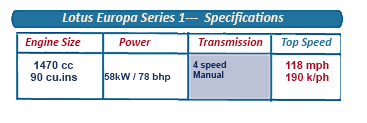 of the year, Colin Chapman announced the launch of a new road car, the Europa aimed mainly at the European market.
of the year, Colin Chapman announced the launch of a new road car, the Europa aimed mainly at the European market.
The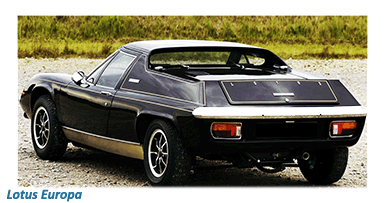 Lotus Europa had a particular claim to fame as the first road-going mid-engined British coupe to go into production.
Lotus Europa had a particular claim to fame as the first road-going mid-engined British coupe to go into production.
Developed in association with Regie Renault in France, who had produced engine/transmission units as used in their R16 saloon - a five main bearing four-cylinder water-cooled engine mainly in light alloy.
Engine capacity was 1470 cc, and for Lotus use a 28-mm double-choke Solex carburettor was also fitted, making for a maximum speed being 115 mph.
![]()
The Europa's engine and transmission package was mounted behind the cockpit but ahead of the rear axle line in a similar steel backbone chassis to that used in the Elan.
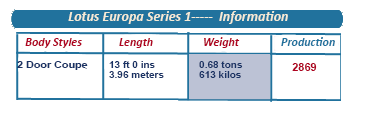
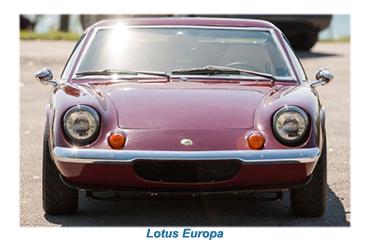 At the Europa’s rear, a typically Chapman independent system of long radius arms and lower links forming ultra-wide based wishbones, with fixed-length Hooke-jointed drive shafts completing the wheel location, was fitted.
At the Europa’s rear, a typically Chapman independent system of long radius arms and lower links forming ultra-wide based wishbones, with fixed-length Hooke-jointed drive shafts completing the wheel location, was fitted.
Telescopic coil spring/damper units were used all round, and the brake system included Girling 9i-inch front discs with 8-inch rear drums.
The whole concoction was clothed in a streamlined but, in the eyes of many, not particularly attractive glass-fibre two-door shell.
The body was styled on behalf of Lotus by renowned UK designer John Frayling, who had also produced the Elan revisions.
The Europa came with a Ford Anglia front bumper and a Cortina rear one and, with an Elan-like front-end merging into a high-sided tail with a small spoiler lip, making for a most distinctive appearance.
![]()
Europa owners and their passengers had to be reasonably agile people as entry to this low-built coupe could be somthing of a physical challenge.
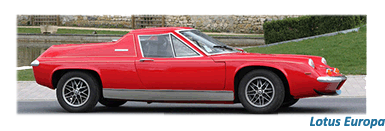 On the other hand, once safely seated, the Europa’s Elan-like seating position and control disposition could hardly be faulted, although the slit rear window did have its disadvantages, particularly when attempting to reverse or sight oncoming traffic at difficult-angled road junctions.
On the other hand, once safely seated, the Europa’s Elan-like seating position and control disposition could hardly be faulted, although the slit rear window did have its disadvantages, particularly when attempting to reverse or sight oncoming traffic at difficult-angled road junctions.
As the Sixties were drawing to a close, Lotus introduced a Series 2 version of Europa (the type 54) which came with just a few added refinements such as electric windows and radio as standard as well as a detachable chassis, for those looking for improved access to the car’s mid-engine.






